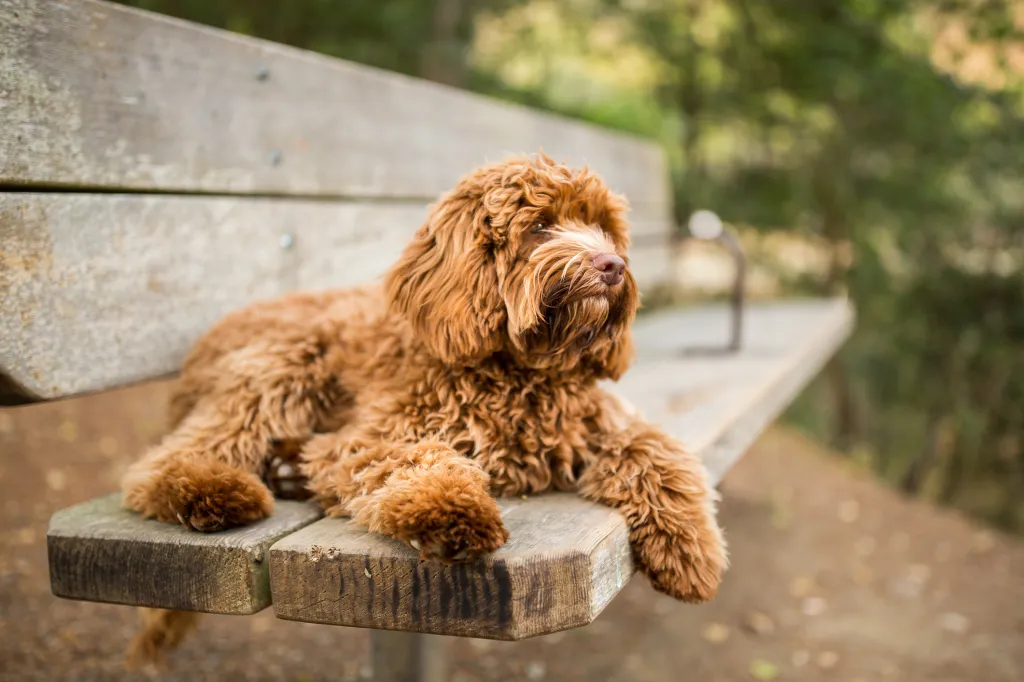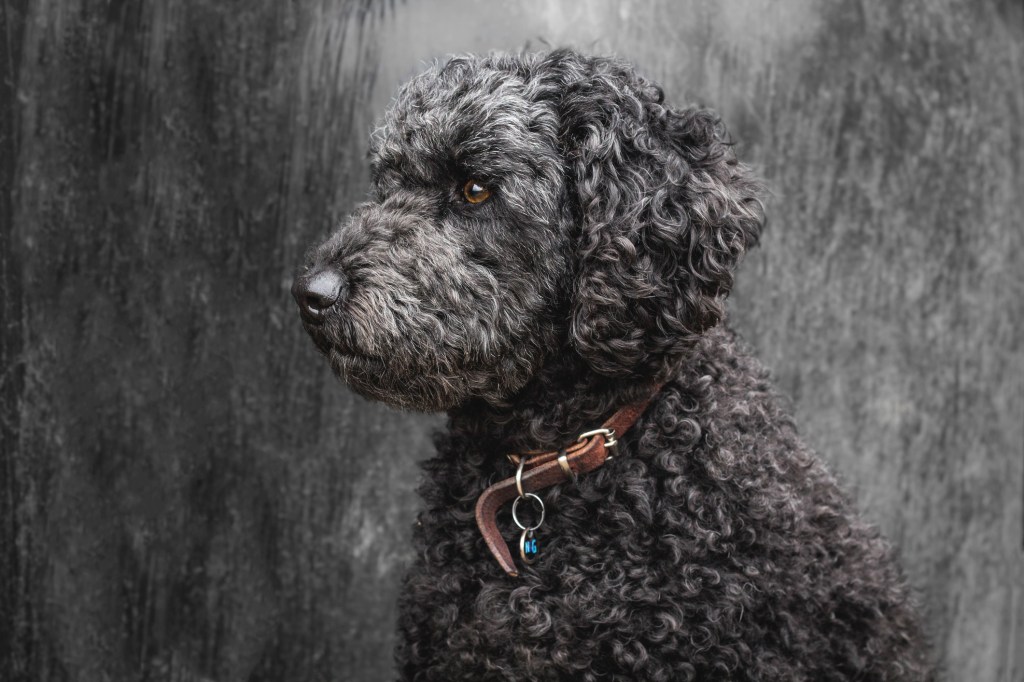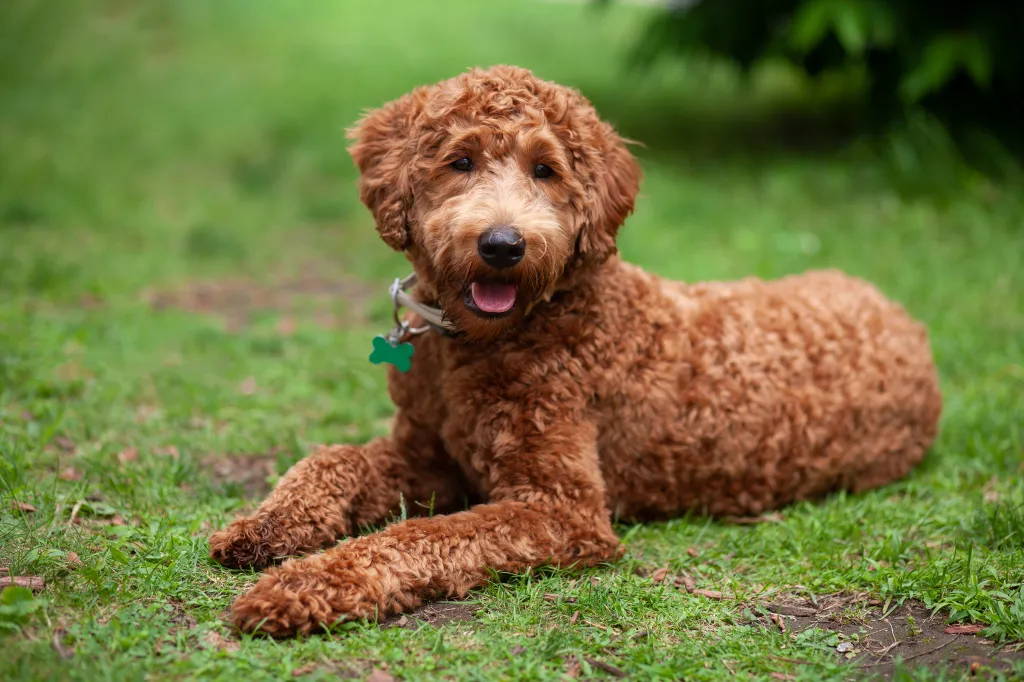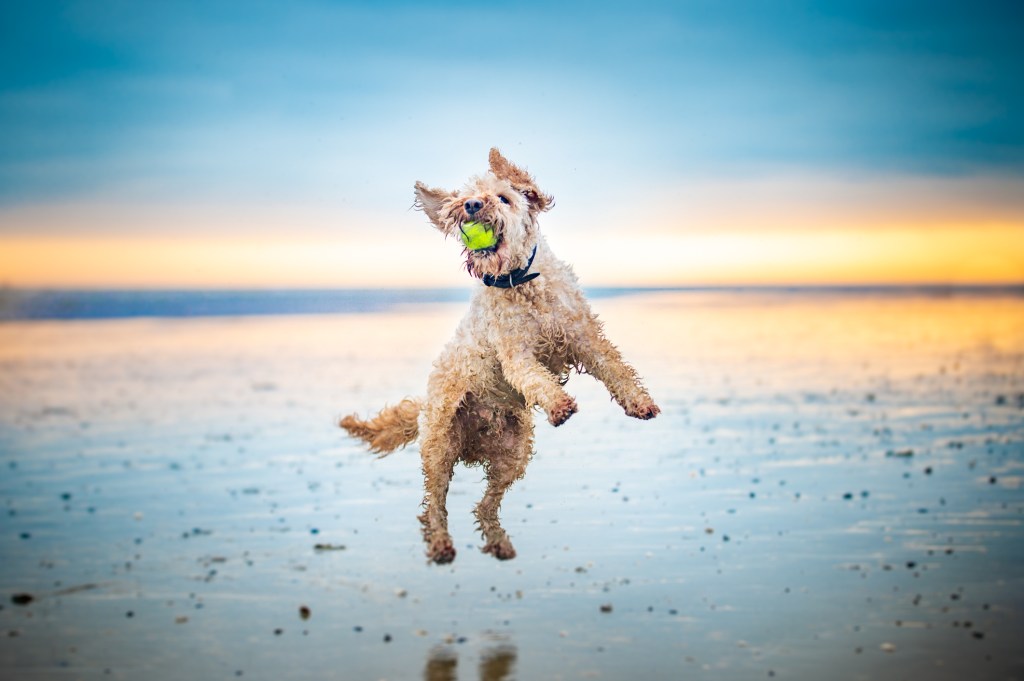It’s not surprising that the Labradoodle has gained such popularity so quickly. Originally developed to be hypoallergenic guide dogs, the first planned crosses of Poodles and Labrador Retrievers were arranged by the Royal Guide Dogs Association of Australia. The result was a Labradoodle – a smart and sociable dog who not only possessed a nature appropriate for guide dogs but also had a low-shedding coat. While the hybrid is not yet achieving consistent results in coat or temperament, they’re wildly popular and affectionate dogs. They are referred to in Australia as “Cobberdogs.”
The popularity of Labradoodles has been increasing in recent years since the rise of social media. In 2020, they were the 7th most popular dog breed in the United States. This is likely due to their combination of desirable traits, such as their hypoallergenic coat, friendly temperament, and versatility.
When considering a Labradoodle, it’s advisable to prioritize adopting from rescue organizations or shelters to provide a loving home to a dog in need. However, if you decide to purchase a Labradoodle puppy, it’s crucial to choose a reputable breeder. Conduct thorough research to ensure that the breeder follows ethical practices and prioritizes the well-being of their dogs. Reputable Labradoodle breeders prioritize the health and temperament of their dogs, conduct necessary health screenings, and provide a nurturing environment for the puppies. This active approach ensures that you bring home a healthy and happy pup while discouraging unethical breeding practices.
Quick Facts
- Origin: Australia. The Labradoodle was initially developed in Australia in the 1980s as a cross between a Labrador Retriever and a Poodle. The goal was to create a hypoallergenic guide dog for people with allergies.
- Size: Medium to Large
- Breed Group: Hybrid (Designer)
- Lifespan: 10 to 15 years
- Coat: Can vary (curly, wavy, or straight), usually low shedding
- Temperament: Labradoodle are friendly, intelligent, and social. Their intelligence makes them quick learners, and their affable nature makes them suitable as therapy and assistance dogs.
- Exercise Needs: Moderate to High. Regular walks, playtime, and mental stimulation are important to keep them happy and healthy. They often enjoy activities such as fetch, agility, and swimming.
- Training: Highly trainable, often excels in obedience. Consistent, positive reinforcement methods work well with this breed.
- Grooming: Regular grooming needed to prevent matting.
- Health: Some breed-specific concerns, such as hip dysplasia and eye issues.
- In 2023, a 6-year-old Labradoodle named Kiera was honored with a “Dogtorate” degree from the University of Maryland for her service in comforting health care workers.
Like most hybrid dogs, Labradoodles end up in shelters or rescues. If you want to bring one of these loving, faithful, and adorable dogs into your home, then make sure you opt to adopt if you can! There are many rescues dedicated to the welfare of Labradoodles.
Labradoodle Pictures






Labradoodle Overview
The Labradoodle is a popular and affectionate designer dog breed that was originally created by crossing a Labrador Retriever with a Standard or Miniature Poodle. Known for their friendly and gentle disposition, Labradoodles have become a beloved choice for families and individuals seeking a loyal and intelligent companion. One of their key attractions is their hypoallergenic coat, which can come in various textures, including curly, wavy, or straight, making them a suitable option for those with allergies. This breed’s coat can range in color, often reflecting the colors of their parent breeds, such as chocolate, black, cream, or apricot.
Labradoodles are known for their social and outgoing nature, which makes them excellent family pets. They are typically good with children and get along well with other dogs, fostering a sense of harmony within the household. Their intelligence and eagerness to please make them relatively easy to train, although consistent and positive reinforcement methods work best. Due to their Labrador heritage, they are also known for their energy and require regular exercise and mental stimulation to prevent boredom and maintain their well-balanced temperament.
Labradoodle Highlights
- Friendly and intelligent: Labradoodles are known for being friendly and intelligent dogs. They are good with children and other animals, and they are easy to train.
- Hypoallergenic: Labradoodles are often considered to be hypoallergenic, which means that they do not shed as much as other dogs. This makes them a good choice for people with allergies.
- Active and playful: Labradoodles are active dogs that need regular exercise. They enjoy playing fetch, going for walks, and swimming.
- Loyal and devoted: Labradoodles are loyal and devoted dogs that make great companions. They are always happy to see their owners and they love to cuddle.
- Versatile: Labradoodles are versatile dogs that can be trained for a variety of tasks, including therapy work, obedience, and agility.
Labradoodle History
Wally Conron, who was in charge of the breeding program for the Royal Guide Dogs Association of Australia, purposefully crossbred a Standard Poodle and Labrador Retriever in 1989 to develop the Labradoodle as a hypoallergenic guide dog. The first cross produced Sultan, a dog with a hypoallergenic coat, aptitude, intelligence, and personality suitable for being an effective guide dog. Sultan worked successfully with a woman in Hawaii.
Other breeders saw the merit of crossing these two breeds, and the Labradoodle quickly rose in popularity like its Labrador Retriever parent. These dogs are often produced by crossing a Labrador Retriever with a Poodle, but multigenerational breeding has begun in an attempt to produce a viable and recognizable breed.
The Australian Labradoodle Association and the International Australian Labradoodle Association are taking steps to move this designer breed into registered breed status in the next few years. These groups have made great efforts to bring breeders together so that they are working to achieve the same standards through multigenerational breeding.
Labradoodle Size
The Labradoodle comes in three size variations, depending on the size of the Poodle used for the first-generation breeding. The three sizes are Standard, Medium, and Miniature.
- The Standard Labradoodle should be 22 to 24 inches in height for a male and 21 to 23 inches in height for a female, while both can range in weight from 50 to 65 pounds.
- The Medium Labradoodle should be 18 to 20 inches high for a male and 17 to 19 inches high for a female, with both weighing from 30 to 45 pounds.
- The average size for a Miniature Labradoodle is between 14 to 16 inches and 15 to 25 pounds.
All of that said, there is a lot of variation in Labradoodle sizes. Some can be smaller or larger than expected.
Labradoodle Personality
The Labradoodle is an intelligent dog who can make the ideal family pet if properly trained. They are friendly and accept and treat everyone like their best friend. They’re devoted to their family and enjoy life as an energetic companion.
They can be gentle, but they can also be joyful, showing their happiness through exuberant jumping and playing. They also tend to be easygoing, since the Labradoodle was bred not to be aggressive. As is the case with any breed, some aren’t all that friendly, but a well-trained Labradoodle with a characteristic temperament is a true joy.
Temperament is affected by a number of factors, including heredity, training, and socialization. Puppies with nice temperaments are curious and playful, willing to approach people and be held by them. Choose the middle-of-the-road puppy, not the one who’s beating up their littermates or the one who’s hiding in the corner.
Always meet the dog you’re interested in before bringing them home to ensure that they have nice temperaments that you’re comfortable with. Meeting siblings, parents, or other relatives of the dog is also helpful for evaluating what a Labradoodle puppy will be like when they grow up.
Like every dog, the Labradoodle puppies need early socialization–exposure to many different people, sights, sounds, and experiences–when they’re young. Socialization helps ensure that your Labradoodle puppy grows up to be a well-rounded dog. Enrolling them in a puppy kindergarten class is a great start. Inviting visitors over regularly, and taking them to busy parks, stores that allow dogs, and on leisurely strolls to meet neighbors will also help them polish their social skills.
Labradoodle Health
Labradoodles are generally healthy, but like all breeds, they’re prone to certain health conditions. Not all Labradoodles will get any or all of these diseases, but it’s important to be aware of them if you’re considering this mixed breed. Here are a few conditions to watch out for:
- Ear Infections: These can plague Labradoodles because of their floppy ears. The ears trap moisture and should be regularly checked.
- Hip Dysplasia: This is an inherited condition in which the thighbone doesn’t fit snugly into the hip joint. Some dogs show pain and lameness on one or both rear legs, but others don’t display outward signs of discomfort. X-ray screening is the most certain way to diagnose the problem. Either way, arthritis can develop as the dog ages. Dogs with hip dysplasia should not be bred.
- Elbow Dysplasia: Similar to hip dysplasia, this is also a degenerative disease. It’s believed to be caused by abnormal growth and development, which results in a malformed and weakened joint. The disease varies in severity: the dog could simply develop arthritis, or they could become lame. Treatment includes surgery, weight management, medical management, and anti-inflammatory medication.
- Epilepsy: This is a neurological condition that’s often, but not always, inherited. It can cause mild or severe seizures that may show themselves as unusual behavior–such as running frantically as if being chased, staggering, or hiding–or even by falling down, limbs rigid, and losing consciousness. Seizures are frightening to watch, but the long-term prognosis for dogs with idiopathic epilepsy is generally very good. It’s important to take your dog to the vet for proper diagnosis–especially since seizures can have other causes–and treatment.
- Allergies: Allergies are a common ailment in dogs, and the Labradoodle is no exception. There are three main types of allergies: food allergies, which are treated by eliminating certain foods from the dog’s diet; contact allergies, which are caused by a reaction to a topical substance such as bedding, flea powders, dog shampoos, and other chemicals; and inhalant allergies, which are caused by airborne allergens such as pollen, dust, and mildew. Treatment varies according to the cause and may include dietary restrictions, medications, and environmental changes.
- Diabetes Mellitus: This is a disorder in which the body cannot regulate blood sugar levels. A diabetic dog will eat more food to try to compensate for the fact that glucose (sugar) isn’t getting into the cells to burn for energy because of improper levels of insulin in the body. The dog will lose weight because food is not being used efficiently. Symptoms of diabetes are excessive urination and thirst, increased appetite, and weight loss. Diabetes can be controlled by diet and the administration of insulin.
- Progressive Retinal Atrophy (PRA): This is a family of eye diseases that involves the gradual deterioration of the retina. Early in the disease, affected dogs become night-blind; they lose sight during the day as the disease progresses. Many affected dogs adapt well to their limited or lost vision, as long as their surroundings remain the same.
- Hypothyroidism: This is a disorder of the thyroid gland. It’s thought to be responsible for conditions such as epilepsy, alopecia (hair loss), obesity, lethargy, hyperpigmentation, pyoderma, and other skin conditions. It is treated with medication and diet.
Labradoodle Care
Labradoodles can adapt to just about any setting, but they’re not recommended for apartments. They require about 30 to 60 minutes of exercise per day and would do better with a fenced yard in which to expel some energy. Some Labradoodles, especially in the first generation, can require even more exercise.
The Labradoodle makes an excellent jogging companion but also needs some time off-leash to burn off steam. In addition, they need to be intellectually stimulated; they’re smart and energetic, so if they become bored, they can become a destruction machine. The Labradoodle is an intelligent and eager-to-please dog. Training should be easy as long as consistency and positive reinforcement are the methods.
They can make a good companion for first-time dog owners since they don’t need an overly firm hand. Socialize them from puppyhood, since they tend to hurl themselves headlong into canine situations without regard to the feelings of other dogs. This can lead to some problems if the unknown dog is aggressive.
Despite their activity levels, a Labradoodle can adjust to living in suburban or city environments and can do well in rural settings. Although they are used for various working roles, they’re a companion dog through and through, and they should live inside the house, not out in the yard. They’re happiest living in the comforts of home, sleeping soundly on your feet or in a bed next to yours.
Crate training benefits every dog and is a kind way to ensure that your Labradoodle doesn’t have accidents in the house or get into things they shouldn’t. A crate is also a place where they can retreat for a nap. Crate training at a young age will help your Labradoodle accept confinement if they ever needs to be boarded or hospitalized.
Never stick your Labradoodle in a crate all day long, however. It’s not a jail, and they shouldn’t spend more than a few hours at a time in it except when they’re sleeping at night. Labradoodles are people dogs, and they aren’t meant to spend their lives locked up in a crate or kennel.
Labradoodle Feeding
Recommended daily amount: 1 to 2.5 cups of high-quality dry food a day, divided into two meals. How much your adult dog eats depends on their size, age, build, metabolism, and activity level. Dogs are individuals, just like people, and they don’t all need the same amount of food. It almost goes without saying that a highly active dog will need more than a couch potato dog.
The quality of dog food you buy also makes a difference–the better the dog food, the further it will go toward nourishing your dog and the less of it you’ll need to shake into your dog’s bowl. Keep your Labradoodle in good shape by measuring their food and feeding them twice a day rather than leaving food out all the time.
If you’re unsure whether they’re overweight, give them the eye test and the hands-on test. First, look down at them. You should be able to see a waist. Then place your hands on their back, thumbs along the spine, with the fingers spread downward.
You should be able to feel but not see their ribs without having to press hard. If you can’t, they need less food and more exercise. Dividing your Labradoodle’s food into two or more meals per day instead of a big bowl once a day can also lower their risk of gastric torsion, also known as bloat. The Labrador Retriever can suffer from this condition, and it’s a trait that can be easily passed on to any Labradoodle offspring. For more on feeding your Labradoodle, see our guidelines for buying the right food, feeding your puppy, and feeding your adult dog.
Labradoodle Coat Color And Grooming
Although a Labradoodle can have one of a range of coat types, the desired length is four to six inches. They have a single coat with hair ranging from straight to loose curls. The curls shouldn’t be tight and the coat shouldn’t be thick or fluffy. There are three types of texture:
- The Hair coat, which is similar to fur in shedding breeds, is the least popular. Hair coats shed and usually have a normal doggy odor. This coat is seen in first generations, although breeders try to avoid it.
- The second texture, called a Wool coat, is dense and similar in feel to a lamb’s wool, hence its descriptive name. Wool coats hang in loose curls and aren’t dense. Generally, the Wool coat doesn’t have a “doggy” odor and it’s usually nonshedding.
- The Fleece coat has a silky texture often described as an Angora goat texture. This coat ranges from straight to wavy.
Labradoodles are considered to be non- to low shedders, especially those with a Fleece or Wool coat. Hair coats tend to shed just as they do in other breeds, ranging from very low to average shedding. The Labradoodle comes in a wide variety of colors.
These can be gold, apricot, caramel, chalk (a chalky white), black, red, café, cream, silver, chocolate, parchment, and blue. They can also have parti-colored coats, which consist of brindles, phantom, patched, or sable colors. Grooming requirements vary depending on the length and type of coat the dog has.
Generally speaking, you can expect to brush a Labradoodle about once or twice per week. Some can be clipped or trimmed every six to eight weeks to keep the coat easy to maintain. A Labradoodle should only be bathed when necessary–which isn’t often, as many of the coats don’t have a noticeable doggy odor. Like Labs, Labradoodles can be prone to ear infections, so take a little extra time caring for their ears.
Dry and clean them after a swim, and check them once a week for dirt, redness, or a bad odor that can indicate an infection. Then wipe them out weekly with a cotton ball dampened with gentle, pH-balanced ear cleaner to prevent problems.
Brush your Labradoodle’s teeth at least two or three times a week to remove tartar buildup and the bacteria that lurk inside it. Daily brushing is even better if you want to prevent gum disease and bad breath. Trim nails once or twice a month if your dog doesn’t wear them down naturally to prevent painful tears and other problems.
If you can hear them clicking on the floor, they’re too long. Dog toenails have blood vessels in them, and if you cut too far you can cause bleeding–and your dog may not cooperate the next time they see the nail clippers come out. So, if you’re not experienced trimming dog nails, ask a vet or groomer for pointers.
Begin accustoming your Labradoodle to being brushed and examined when they’re a puppy. Handle their paws frequently–dogs are touchy about their feet–and look inside their mouth. Make grooming a positive experience filled with praise and rewards, and you’ll lay the groundwork for easy veterinary exams and other handling when they’re an adult.
As you groom, check for sores, rashes, or signs of infection such as redness, tenderness, or inflammation on the skin, in the nose, mouth, and eyes, and on the feet. Eyes should be clear, with no redness or discharge. Your careful weekly exam will help you spot potential health problems early.
Labradoodle Children And Other Pets
The Labradoodle does well with children and can be an affectionate and gentle companion for any child. They can also be exuberant and might knock down smaller children, but they will love them with all their heart.
As with every breed, you should always teach children how to approach and touch dogs, and always supervise any interactions between dogs and young children to prevent any biting or ear or tail pulling on the part of either party.
Teach your child never to approach any dog while they’re eating or sleeping or to try to take the dog’s food away. No dog, no matter how friendly, should ever be left unsupervised with a child. Labradoodles usually get along well with other dogs and pets. Like most dogs, they need training and socialization for optimum success at living with and visiting other animals.
Labradoodle Rescue Groups
Labradoodles are often brought home without any clear understanding of what goes into owning one. Many end up in the care of shelters or rescues because of this. It may be hard to find a breed-specific rescue for Labradoodles because they are a mixed breed. However, you may want to try Labrador Retriever or Poodle breed-specific rescues, as they often care for mixes, as well. Here are some rescues you can try:
- Carolina Poodle Rescue
- Lucky Lab Rescue & Adoption
Labradoodle Breed Organizations
Finding a reputable dog breeder is one of the most important decisions you will make when bringing a new dog into your life. Reputable breeders are committed to breeding healthy, well-socialized puppies that will make great companions. They will screen their breeding stock for health problems, socialize their puppies from a young age, and provide you with lifetime support.
On the other hand, backyard breeders are more interested in making a profit than in producing healthy, well-adjusted dogs. They may not screen their breeding stock for health problems, and they may not socialize their puppies properly. As a result, puppies from backyard breeders are more likely to have both health and behavioral issues.
More Info For You
- Adoption
- Choosing The Best Dog Name
- Bringing Home Your Dog
- Training To Walk On-Leash
- Housetraining Puppies
- Feeding A Puppy
- Indoor Activities For Dogs
- Teaching Your Dog Tricks
- How To Take Pictures Of Your Dog



